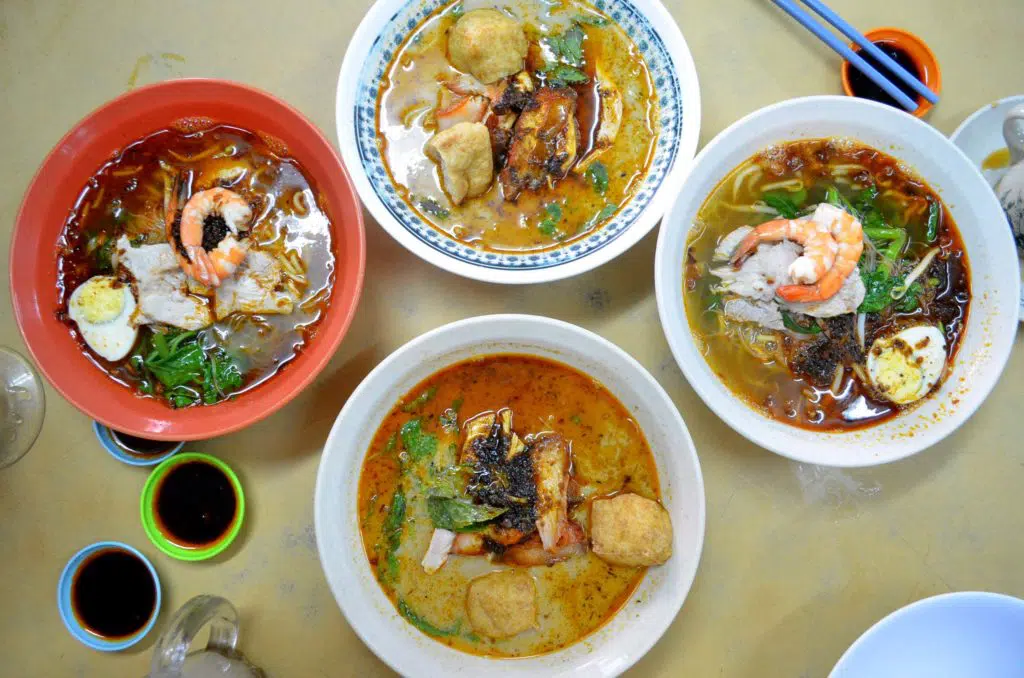The History Of Malaysian Curry

History of Malaysia
Malaysia is located in Southeast Asia and occupies parts of the Malay Peninsula and the island of Borneo. It is known for its beaches, rainforests and fantastic food. Malaysia is a country steeped in history and culture and its cuisine is no exception.
Malaysian cuisine consists of cooking traditions and practices found in Malaysia but that reflect the multi-ethnic makeup of its population. The country’s cuisine has been shaped by historical migration, colonial rule, and foreign powers. The three largest ethnic groups that make up the Malaysian population are Malay, Chinese, and Indian and it is these three groups that have had great historical influence over the evolution of the Malaysian Curry.
That said, to really understand the history of Malaysian curry, you have to look as far back as the 15th Century. It was during this time that Malaysia became an important passageway for maritime trade. Traders would sail by Malaysia from the Middle East and bring with them spices such as Cardamon. In fact, Malaysia’s involvement goes beyond being a passing port, the city of Malacca, which is situated about 200km south of the Capital Kuala Lumpur, was one of the great trading centers of the spice trade in the 15th Century. As a result of this historical international trading hub, Malay cooking has benefitted from spices such as fennel, cumin, coriander, cardamom, cloves, star anise, mustard seeds, cinnamon, and nutmeg. All of which commonly feature in Malay soups and curries.
The Europeans then ventured through the passageways of Malaysia looking to expand their Kingdoms. The Portuguese, Dutch and British all sailed to Malaysia and bought with them staples such as tomatoes, avocados, peanuts, pineapples, and pumpkins.
It was later under British rule, from the early 1800s that the country saw an influx of Chinese and Indian workers. It was this workforce that brought with them their cuisine and heavily influenced Malaysian cuisine. Chinese influences can be seen in noodle dishes containing soy sauce for example.
Together with its historical trading influences and inspiration from neighboring countries such as Indonesia, Singapore, China, and Thailand Malaysian cuisine (more specifically Malaysian curry) has a rich and diverse history.
What is curry?
Curry is a gravy-like consistency, and contrary to popular belief it is not always hot and spicy. The word curry comes from the Tamil word ‘Kahri’ which means sauce and is a gravy-like liquid, not a blend of spices. That said, over the decade’s curry has been commonly associated with curry powder, most likely a result of the British rule in Asia. It is thought that curry powder was actually a derivative of British colonialism. Some believe that a British official who was leaving India during the British rule ordered his servants to make a mix of spices to take with him back to Britain so he could continue to enjoy the Indian cuisine and, alas, the curry powder was born.
Malaysian Curry
Curry powder is commonly found in Malaysia, known as ‘Malaysian curry powder’. Malaysian curry powder or paste is a variant of Indian spices such as garam masala and contains a multitude of food cultures. Malaysian curry powder is a mixture of British preference combined with Indian techniques and spices from both India and Malaysia. Malaysian curry powder will vary depending on its creator but will commonly be dominated by sweet and savory notes, complemented with heat from chili peppers. The sweetness is usually a result of spices such as cinnamon and cardamom. Curry powder is commonly used in Malaysia to make chicken and beef satay. Malaysian dishes that use curry powders and pastes are typically teamed up with coconut milk or belacan (fermented shrimp paste).
Perhaps a little more surprisingly the eclectic mix of internationally founded spices that make up Malaysian curry powder contain multiple health benefits too as they are full of nutrients. Some of the nutrients found in Malaysian curry powder are iron, vitamin C, vitamin B, zinc, and fiber.
Some popular Malaysian curry dishes include Curry Laksa, Curry Mee, Kari Ayam (Chicken Curry), Kari Ikan (Fish Curry), Beef Rendang, and Roti Canai!
